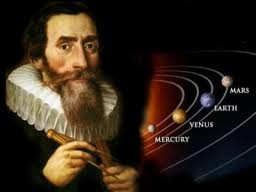-
(b.) -1571 December 27(d.)1630 November 15
Bio/Description
A German mathematician, astronomer and astrologer and a key figure in the 17th century scientific revolution, he is best known for his eponymous laws of planetary motion, codified by later astronomers, based on his works Astronomia nova, Harmonices Mundi, and Epitome of Copernican Astronomy. These works also provided one of the foundations for Isaac Newton's theory of universal gravitation. He was born on December 27, 1571, at the Free Imperial City of Weil der Stadt (now part of the Stuttgart Region in the German state of Baden-W?rttemberg, Born prematurely, he claimed to have been a weak and sickly child. He was, however, a brilliant child; he often impressed travelers at his grandfather's inn with his phenomenal mathematical faculty. During his career, he was a mathematics teacher at a seminary school in Graz, Austria, and later he became an assistant to astronomer Tycho Brahe, the imperial mathematician to Emperor Rudolf II and his two successors Matthias and Ferdinand II. He was also a mathematics teacher in Linz, Austria, and an adviser to General Wallenstein. Additionally, he did fundamental work in the field of optics, invented an improved version of the refracting telescope (the Keplerian Telescope), and mentioned the telescopic discoveries of his contemporary Galileo Galilei. He lived in an era when there was no clear distinction between astronomy and astrology, but there was a strong division between astronomy (a branch of mathematics within the liberal arts) and physics (a branch of natural philosophy). He also incorporated religious arguments and reasoning into his work, motivated by the religious conviction and belief that God had created the world according to an intelligible plan that is accessible through the natural light of reason. He described his new astronomy as "celestial physics", as "an excursion into Aristotle's Metaphysics", and as "a supplement to Aristotle's On the Heavens", transforming the ancient tradition of physical cosmology by treating astronomy as part of a universal mathematical physics.
He attended T?binger Stift at the University of T?bingen. There, he studied philosophy under Vitus M?ller and theology under Jacob Heerbrand He proved himself to be a superb mathematician and earned a reputation as a skillful astrologer, casting horoscopes for fellow students. Under the instruction of Michael Maestlin, T?bingen's professor of mathematics from 1583 to 1631, he learned both the Ptolemaic system and the Copernican system of planetary motion. He became a Copernican at that time. In a student disputation, he defended heliocentrism from both a theoretical and theological perspective, maintaining that the Sun was the principal source of motive power in the universe. Despite his desire to become a minister, near the end of his studies he was recommended for a position as teacher of mathematics and astronomy at the Protestant school in Graz (later the University of Graz). He accepted the position in April 1594, at the age of 23.
He was a contemporary of Galileo Galilei and after hearing of Galileo's telescopic discoveries, he also started a theoretical and experimental investigation of telescopic optics using a borrowed telescope. The resulting manuscript was completed in September 1610 and published as Dioptrice in 1611. In it, He set out the theoretical basis of double-convex converging lenses and double-concave diverging lenses?and how they are combined to produce a Galilean telescope?as well as the concepts of real vs. virtual images, upright vs. inverted images, and the effects of focal length on magnification and reduction. He also described an improved telescope?now known as the astronomical or Keplerian telescope?in which two convex lenses can produce higher magnification than Galileo's combination of convex and concave lenses. Around 1611, he circulated a manuscript of what would eventually be published (posthumously) as Somnium (The Dream). Part of the purpose of Somnium was to describe what practicing astronomy would be like from the perspective of another planet, to show the feasibility of a non-geocentric system. The manuscript, which disappeared after changing hands several times, described a fantastic trip to the moon; it was part allegory, part autobiography, and part treatise on interplanetary travel (and is sometimes described as the first work of science fiction).
He published the first description of the hexagonal symmetry of snowflakes and, extending the discussion into a hypothetical atomistic physical basis for the symmetry and posed what later became known as the Kepler conjecture, a statement about the most efficient arrangement for packing spheres. He was one of the pioneers of the mathematical applications of infinitesimals, i.e., Law of Continuity which is the principle that "whatever succeeds for the finite, also succeeds for the infinite". He used it to calculate the area of the circle by representing the latter as an infinite-sided polygon with infinitesimal sides, and adding the areas of infinitely many triangles with infinitesimal bases. This laid the groundwork for infinitesimal calculus. A mathematical implementation of the law of continuity is provided by the transfer principle in the context of the hyperreal numbers.
-
Date of Birth:
1571 December 27 -
Date of Death:
1630 November 15 -
Gender:
Male -
Noted For:
Noted for his eponymous laws of planetary motion -
Category of Achievement:
-
More Info:


